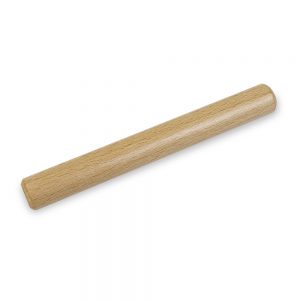Organic Baby Impression Kits
For permanent hand and/or foot prints
Features
- For permanent hand and/or foot prints
- Casting clay made from certified organic potato starch
- Tested by an independent test institute
- Enclosed accessories made from renewable materials
- Contents: one tin containing approx. 150g
- Impression kit available in 2 variants: with one or two tins casting clay


Product description
Description
In the first few months babies grow very quickly and before you know it your little treasure has turned into a young adult. With the organic baby impression kit you can create a cast of your little treasure’s hand or foot print to keep as an unforgettable memento. Our casting clay is made from certified organic potato starch and has been tested by an independent test institute for the safety of your child. The casting clay meets the requirements of the EN 71-3 and EN-71-9 (toy safety standard). The casting clay is made entirely in Germany. Our accessories are made from renewable and controlled materials. The casts make ideal memorable and personalised gifts to mark a birth.
Application
Step 1: Make sure that your work surface is clean and smooth. We recommend using baking paper as a base. This prevents the clay from sticking to the surface
and protects your furniture from residue. Wash and dry your hands before using the product to prevent the clay from becoming contaminated.
Step 2: Take the clay and knead it thoroughly for at least 5 minutes to form a homogeneous mass and to prevent cracks or breakages after drying. Take particular care to ensure that there are no air bubbles.
Step 3: Place the clay in the centre of the cutter and press it into the mould by hand. Use the roller provided to smooth out the clay until you have a disc with a thickness of about 0.8 cm. The clay should ultimately be the same thickness as the punching tool. If you fi nd that the roller provided is too small, you may use your own (e.g. a rolling pin).

Tip: To keep the clay from sticking to the roller, we suggest dusting the roller with some flour or starch. So that the impression has neat edges, we suggest carefully removing the cutter from the clay. Cleanly punch the clay with the punching tool and then place the cutter around the clay again.

Step 4: Wash and dry your baby’s hands or feet. Press your baby‘s hand/foot into the prepared clay until an impression is made. If you are not happy with the results, you can repeat the process from Step 2 onwards.
Please note: The impression should not be too deep (to prevent the clay from breaking after drying), but also not too light so that the impression is clear. A depth of 4 mm is ideal. The cutter should be placed around the clay when making the impression so that the shape will not be distorted.

Step 5: If desired, do not forget to pierce a hole at the top of the clay. This is where the hanging cord can be attached after drying. To prevent the clay from breaking, make sure that the hole is not too close to the edge. Make sure that it is at a distance of at least 8 mm from the edge. Carefully remove the cutter from the clay.
Tip: Use a pencil of the desired thickness to make the hole or use the wooden roller provided for a clean and even result.

Step 6: Leave the impression to dry in the open air for at least 24 hours. Then turn the impression over and let the other side dry for at least 24 hours. The
cast can now be carefully finished. Please note that it takes up to one week for the clay to harden. During this time, the clay hardens fully. Drying time depends on the room temperature and humidity, and may therefore differ. Lay the clay on a piece of kitchen roll to dry. Baking paper will prevent the clay from drying properly. Do not touch the clay during this time in order to prevent distortion. Do not dry the impression in the oven as the clay may crack. Do not use heating to speed up the drying process, as this may also cause the clay to crack. Do not leave the clay to dry on just one side during the drying time as this may cause the sides of the impression to rise, resulting in an unattractive result.
Tip: If the hole is not properly punched, use the wooden roller or a pencil to repair it after the first 24 hours of drying.

Step 7: Attach one of the cords to the hardened impression and hang your work up. Done.
Please note: Do not use the cutting die as a frame!
Further instructions for use: The clay should be processed as quickly as possible once the box has been opened. Make sure that the leftover clay is stored in airtight packaging. Use the clay to repair any cracks or minor breakages. If the clay is unintentionally too firm, simply knead it vigorously several times with slightly damp hands. This will restore its original smoothness. Note that the addition of water can increase the drying time.
Material and care advice
The clay is completely harmless.
Material:
Casting clay: Water, Potato starch (COF), Potassium sorbate Sorbic acid, Cooking salt, White oil, Glycerine, Polysaccharides, Methyl cellulose, Phenoxyethanol
The casting clay is:
- Peanut-free
- Lactose-free
- Gluten-free
- Vegan
Roller: 100 % beech wood
Cutter: Organic plastic (94 % sugar cane)
Woven cords: 100 % cotton





















